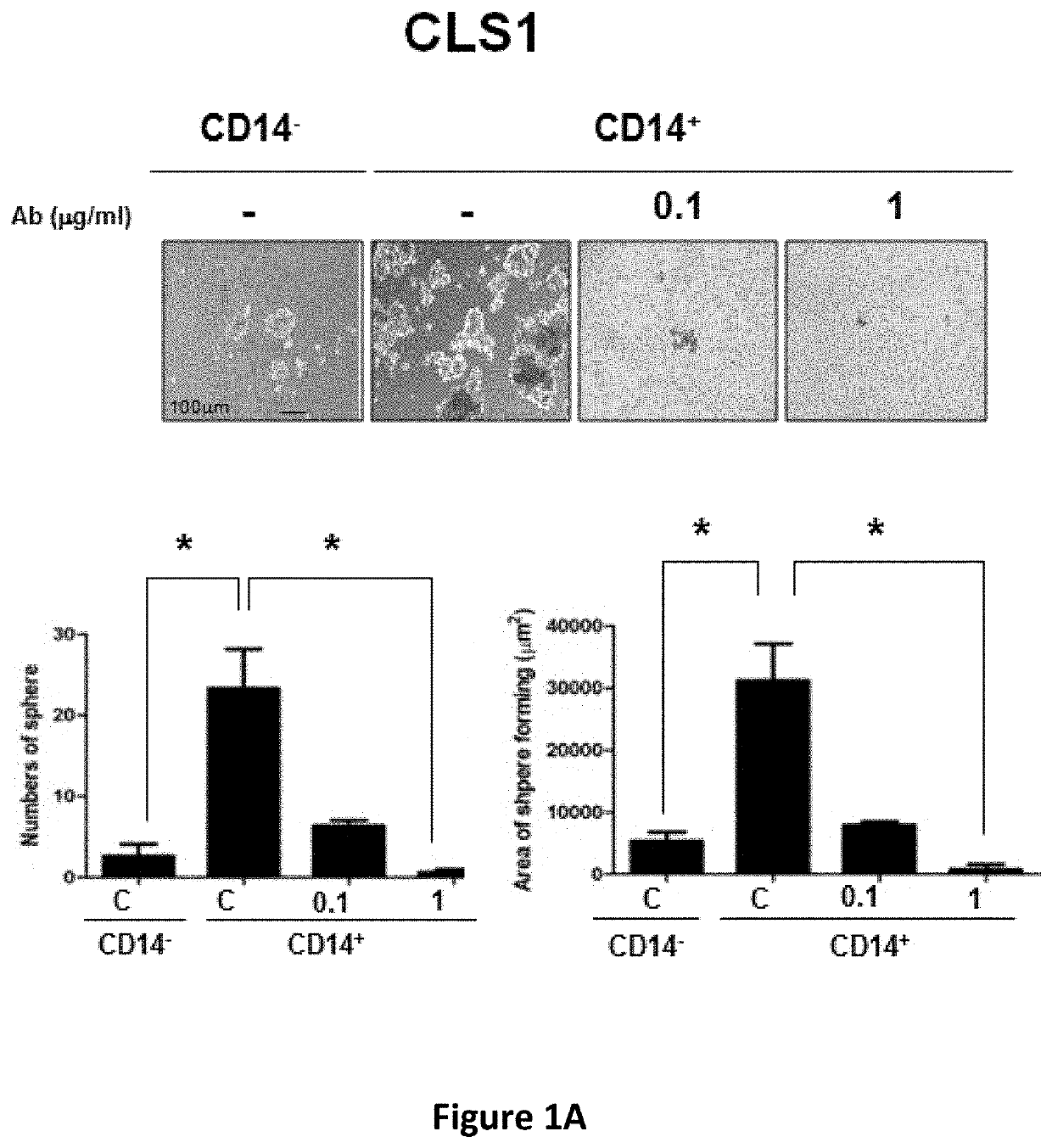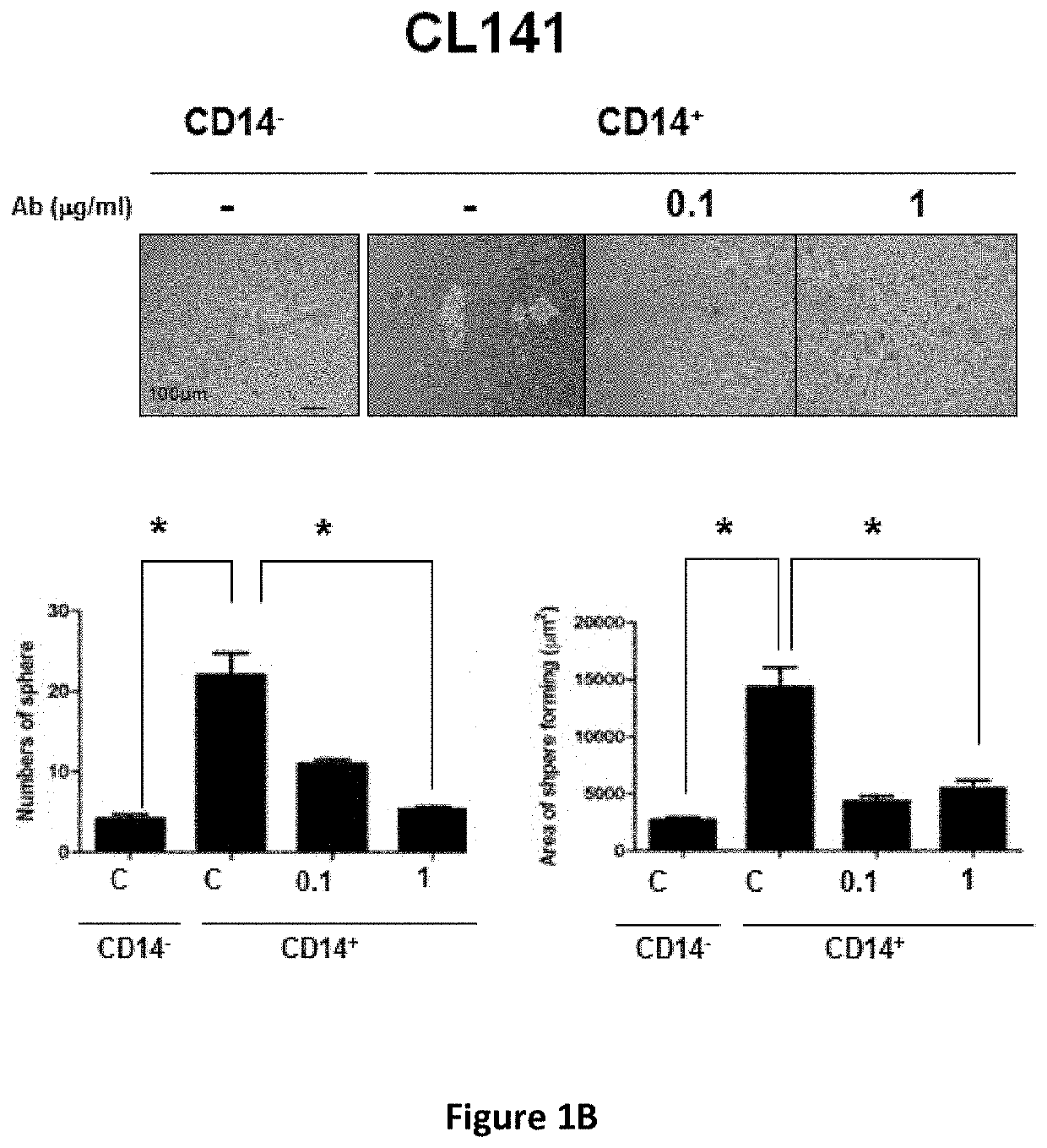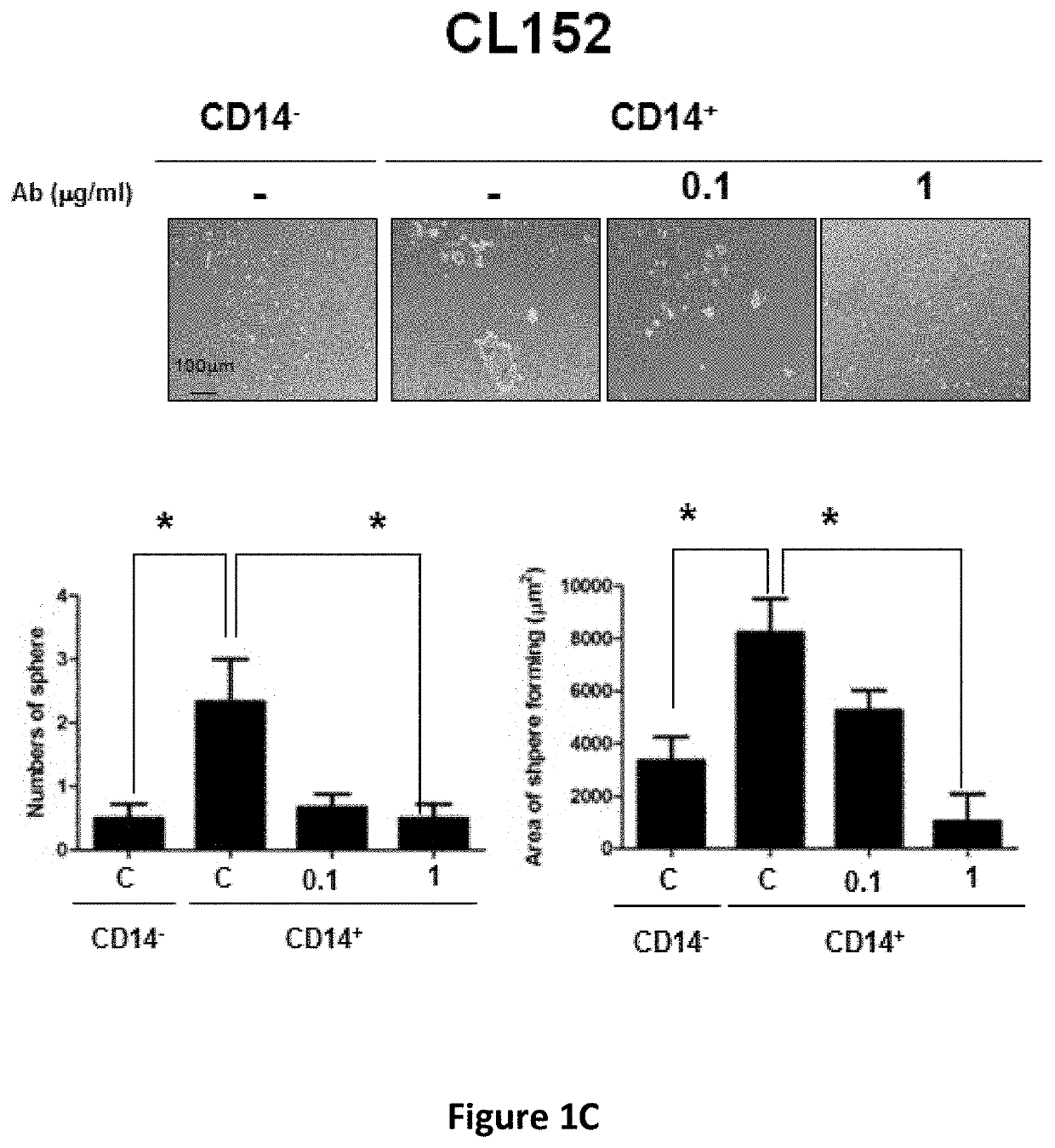Method for treating cancer using cd14 antagonists
a cancer and cd14 technology, applied in the field of cancer treatment, can solve the problems of relatively ineffective treatment, providing patients with a median survival of less than one year, and achieve the effects of inhibiting cancer stem cell-induced immunosuppression, and reducing tumor formation or tumor growth
- Summary
- Abstract
- Description
- Claims
- Application Information
AI Technical Summary
Benefits of technology
Problems solved by technology
Method used
Image
Examples
example 1
e Effect of Anti-CD14 Antibody Against Human Lung Cancer Stem Cells
Materials and Methods
[0118]Human lung cancer cell lines (CLS1, CL141 and CL152) were established using primary cultures from lung cancer patients. The cells were cultured in RPMI 1640 medium supplemented with 10% FBS at 37° C. under a humidified atmosphere consisting of 20% O2 and 5% CO2.
Ultra-Low Sphere Forming Assay
[0119]An ultra-low sphere-forming assay was performed according to standard procedures and modified as described herein. A single-cell suspension of lung CSCs in MCDB201 serum-free medium (Invitrogen) supplemented with 20 ng / ml EGF (Sigma) and 20 ng / ml bFGF (Invitrogen) was seeded in ultra-low adherent 24-well plates (Corning, Corning, N.Y., USA; 200 viable cells / well). The medium was supplemented with fresh growth factors twice weekly. After 3 weeks, the spheres were examined under the Axiovert 200 microscope.
Xenograft Tumor Formation in SCID Mice
[0120]All procedures involving mice...
example 2
ation of CD14-Specific Signaling Pathways in Lung CSCs
Materials and Methods
Real-Time Reverse Transcriptase (RT) Q-PCR
[0126]The expression level of stemness-related genes and validation of the Affymetrix microarray data for CD14 overexpression CLS1 and Mock CLS1 cells were performed through RT Q-PCR using an ABI Prism 7900 Sequencer (Applied Biosystems). The primers were designed using Primer Express 3.0 (Applied Biosystems) (Table 1). β-actin were used as internal controls. The expression levels were normalized to β-actin and defined as −ΔCT=−[CTtarget−CTβ-actin]. The relative expression ratio was calculated as the fold change relative to the control (2−ΔΔCT). The experiments were performed in triplicate.
TABLE 1Primers for RT Q-PCRGeneForwardReverseSymbolUniGene IDprimerprimerCD14Hs.163867CACAGAGGAGGGAACTCTTCGGCTAACTGAATGACGCCTCTGA(SEQ ID(SEQ IDNO: 1)NO: 2)CD44Hs.502328TGGACACTCACACGACTGTTGACTTGGGAGTCAAGAGCAATGCA(SEQ ID(SEQ IDNO: 3)NO: 4)ALDH1A1NM_000689TCCAGCCCACAGACTGGTCCAAAATGTTC...
example 3
ulates Cancer Cell Stemness Through the JAK Signaling Pathway
Materials and Methods
Enzyme-Linked Immunosorbent Assay (ELISA)
[0132]For the quantitative determination of human soluble CD14 (sCD14) protein levels secreted to the media, sCD14 ELISA (Quantikine ELISA Human sCD14 Immunoassay, R&D Systems, Minneapolis, Minn., USA) were used according to the manufacturer's instructions. Conditioned medium of CAF cultures, CLS1 / CAF co-cultures and CLS1 cultures were collected after 24 h in serum-free medium and 100 μL of the conditioned medium was used for sCD14 quantitative determination.
Human Receptor Tyrosine Kinase Phosphorylation Antibody Arrays
[0133]Human phosphorylation antibody arrays (G Series 1, Ray Biotech, Inc.) were used according to the manufacturer's instructions. Briefly, cell lysates from CLS1 cells treated with sCD14 (200 ng / ml) at different time points (0, 30, 60 min) were collected and incubated with the blocked glass array for 24 h at 4° C. with gentle shaking. After deve...
PUM
| Property | Measurement | Unit |
|---|---|---|
| concentration | aaaaa | aaaaa |
| concentration | aaaaa | aaaaa |
| concentration | aaaaa | aaaaa |
Abstract
Description
Claims
Application Information
 Login to View More
Login to View More - R&D
- Intellectual Property
- Life Sciences
- Materials
- Tech Scout
- Unparalleled Data Quality
- Higher Quality Content
- 60% Fewer Hallucinations
Browse by: Latest US Patents, China's latest patents, Technical Efficacy Thesaurus, Application Domain, Technology Topic, Popular Technical Reports.
© 2025 PatSnap. All rights reserved.Legal|Privacy policy|Modern Slavery Act Transparency Statement|Sitemap|About US| Contact US: help@patsnap.com



